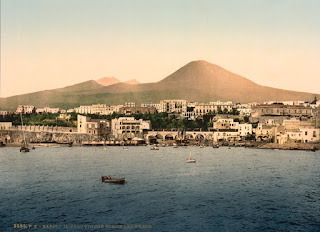Niccolò Antonio Zingarelli - composer
Neapolitan who snubbed Napoleon wrote 37 operas
The composer Niccolò Antonio Zingarelli, who wrote 37 mainly comic operas and more than 500 pieces of sacred music, was born on this day in 1752 in Naples. His success made him one of the principal composers of opera and religious music of his time. At various points in his career, he was maestro di cappella - music director - at Milan Cathedral, choir master at the Sistine Chapel and director of the Naples Conservatory. Many of Zingarelli’s operas were written for Teatro alla Scala in Milan. Early in his career he worked in Paris, which held him in good stead later when he was arrested after refusing to conduct a hymn for the newly-born son of the Emperor Napoleon, who at the time was the self-proclaimed King of Italy. Read more…
___________________________________________________________________
Daniela Riccardi - leading Italian businesswoman
Head of luxury glassware company trained as a ballet dancer
Born on this day in 1960, Daniela Riccardi is chief executive of Baccarat, the luxury glass and crystal manufacturer that originated in the town of the same name in the Lorraine region of France in the 18th century. Formerly CEO of the Italian clothing company Diesel, she is one of Italy's most successful businesswomen, yet might easily have forged alternative careers as a dancer or a diplomat. She studied ballet for 12 years at the National Dance Academy in Rome, went to Rome University to study political science and international studies, with the aim of working in diplomacy, only to switch to a business career after spending a brief period as an intern at Pepsi. Read more…
____________________________________________________________________
Francesco De Gregori - singer-songwriter
Performer inspired by songs of hero Bob Dylan
The singer-songwriter Francesco De Gregori - popularly known as "Il Principe dei cantautori" (the prince of the singer-songwriters) – was born on this day in 1951 in Rome. De Gregori has released around 40 albums in a career spanning 45 years, selling more than five million records. Famous for the elegant and often poetic nature of his lyrics, De Gregori was once described by Bob Dylan as an “Italian folk hero”. De Gregori acknowledges Dylan as one if his biggest inspirations and influences, along with Leonard Cohen and the Italian singer Fabrizio de André. Covers of Dylan songs have regularly featured in his stage performances. He made an album in 2015 entitled Love and Theft: De Gregori Sings Bob Dylan. Read more…
__________________________________________________________________
Irene Pivetti – journalist and politician
From top political office to TV presenter
Irene Pivetti, who was only the second woman to become president of the Italian Chamber of Deputies, was born on this day in 1963 in Milan. Once a key figure in Italy’s Lega Nord party, Pivetti has now quit politics for a career as a television presenter. While working as a journalist, she became involved with the Lega Lombardia (Lombard League), which later became the Lega Nord (Northern League) and in 1992 was elected as a deputy, the Italian equivalent of a Member of Parliament. Two years later, Pivetti was elected President of the Chamber of Deputies. At the age of 31, she was the youngest president in the Chamber’s history. She occupied the role from 1994 to 1996. Read more...
























